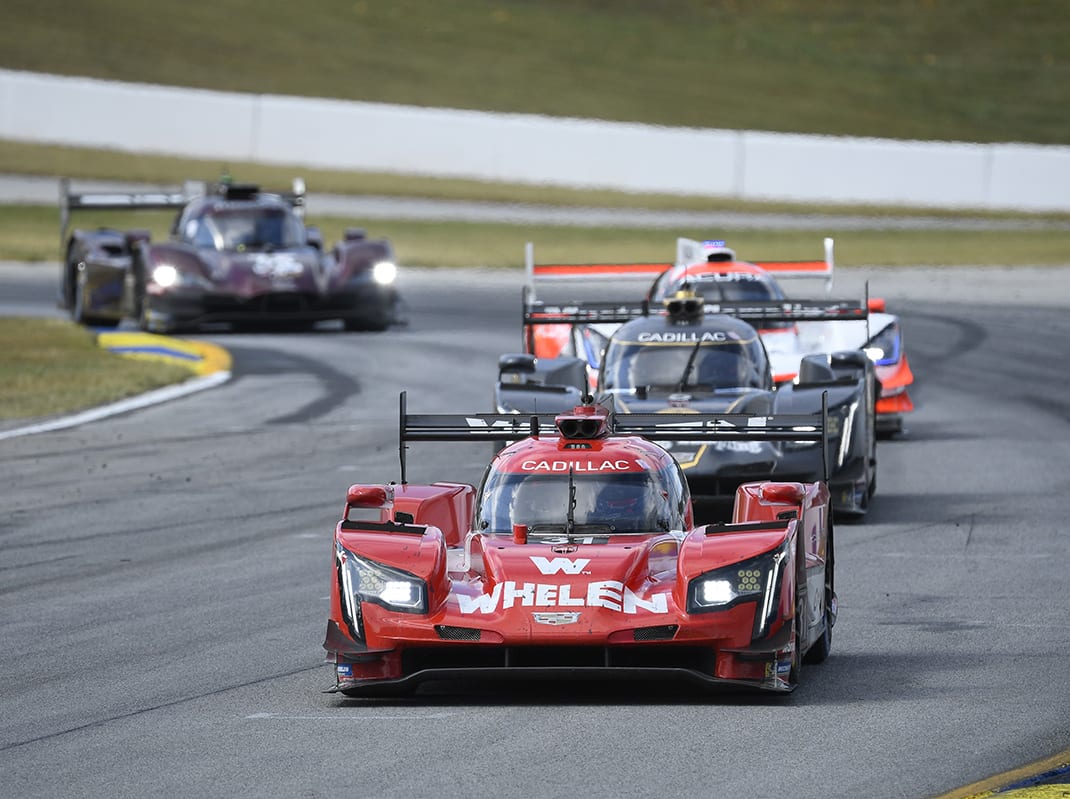DAYTONA BEACH, Fla. – Balance of Performance – or BoP, as it’s commonly known – is often mentioned by drivers, teams and manufacturers in sports car racing.
But what is it and why is it so important in sports car racing.
We’ll take a closer look at what BoP does and how IMSA will use it in the upcoming season that kicks off with the Roar Before the Rolex 24 At Daytona on Jan. 3-5.
Most other forms of motorsports around the world have one driver per car, and each car is built to the same or very similar technical specification. At the end of most races, there is one winner.
Sports car racing is different. You’ve got multiple drivers sharing the same car. You’ve also got multiple classes of race cars competing at the same time, and within each of those classes, you’ve got markedly different car configurations and technologies.
Those differences are what makes sports car racing so appealing to race fans. The diversity of cars and manufacturers provide a visual spectacle and auditory symphony unlike anything else in motorsports.
And that’s also why we have BoP.
The IMSA WeatherTech SportsCar Championship again will have four different classes. In the flagship Daytona Prototype international class, there will be normally aspirated V8-powered Cadillacs competing against twin-turbo V6-powered Acuras and turbocharged, four-cylinder Mazdas. All DPis are mid-engined.
In the GT Le Mans class, we have the BMW M8 GTE with a front-engined, turbocharged V8. The new Corvette C8.R is now mid-engined with a normally aspirated V8, while the Porsche 911 RSR has a flat, six-cylinder normally aspirated engine also mounted ahead of the rear axle. The Ferrari 488 GTE has a mid-engined, twin-turbocharged, V8 configuration.
The GT Daytona class will have 10 different models competing with a variety of layouts and engine types. The Acura NSX GT3 is a twin-turbo, mid-engined V6. Like its GTLM brethren, the Ferrari 488 GT3 also has a mid-engine, twin-turbo V8, as does the McLaren 720S GT3, which will open its 2020 IMSA WeatherTech Sprint Cup season at April’s Acura Grand Prix of Long Beach. The Audi R8 GT3 LMS and Lamborghini Huracán GT3 each have normally aspirated V10s with a mid-engine configuration.
The Aston Martin Vantage GT3 and BMW M6 GT3 use twin-turbocharged V8s and a front-engine configuration.The Mercedes-AMG GT3 and Lexus RC F GT3 are front-engined too, but use naturally aspirated V8, while the Porsche 911 GT3 R still uses its longstanding, normally aspirated, flat-six engine situated behind the rear wheels.
The LMP2 class is the closest thing to spec, with all of the mid-engined cars using normally aspirated Gibson V8 engines. However, the class is open to chassis built by four different constructors and BoP is not used in this class.
The different engines and configurations are only part of the equation. The mass and weight distribution of each car, especially in the GT classes, can differ substantially between models, and each also has its own aerodynamic capabilities.
With such different vehicles competing against each other, BoP is the mechanism IMSA uses to put the cars in each class on as level a technical playing field as possible. For the DPi and GTLM classes, IMSA’s goal is to have every car within a performance window of 0.3 percent, and a 0.5 percent window in GTD.
That means the fastest DPi or GTLM car would cross the finish line three tenths of a second ahead of the slowest car in class at the end of a 100-second lap. Visually, we’re talking about the length of a conference room table.
In GTD, it’d be half a second from fastest to slowest, which is the length of a slightly larger conference room table. In all cases, it’s little more than a blink of an eye.
In terms of performance windows, that’s tiny from a technical perspective. As a result, the outcome of each race should ultimately come down to driver skill, pit crew prowess and race strategy as opposed to one car’s technical superiority over another.
A similar process also is used for the IMSA Michelin Pilot Challenge, where substantial diversity among manufacturers and technology is found in both the Grand Sport (GS) and TCR classes. Between the WeatherTech Championship and Michelin Pilot Challenge, a total of 17 different manufacturers will compete in 2020.
